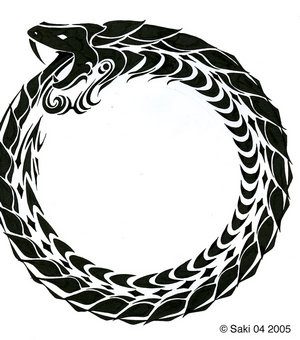Post by Andrei on Jun 10, 2007 11:02:55 GMT
The Camarilla is a loose organization which ostensibly represents and protects all Kindred by enforcing and promulgating The Masquerade.
History
The Camarilla was officially founded in 1493 in the hamlet of Thorns, however the origins of the organization can be traced back to the Inquisition.
With the end of the dark ages, the Inquisition had become a progressively more effective vampire-hunting organization; in reaction to this, elders began treating their childer as (even more) cannon fodder. As the death rates rose, the childer rebelled, and with Tyler's diablerie of Hardestadt the Elder in 1381 precipitated the Anarch Revolt.
As the revolt spread, the loose society of the Kindred was strained — several Anarchs diablerized Antediluvians themselves, while the Giovanni eliminated their Cappadocian progenitors and the Assamites took advantage of the chaos to slake their own blood-thirsts. The chaos even extended to the control-freak clan Tremere, leading eventually to a revolt by the Gargoyles.
By the late 15th century, Kindred society was approaching extinction, even if the Anarchs didn't realize that. To prevent their own deaths (and incidentally those of all vampires), seven elders met at Thorns to outline a protection strategy:
• Hardestadt the Younger: Progeny (and now imitator) of the late Ventrue elder.
• Rafael De Corazon: Poseur of clan Toreador and idealist.
• Mistress Fanchon: Representative of clan Tremere
• Camilla Baines: Of the Malkavians
• Josef Van Bauren: Representing clan Nosferatu
• Adana de Sforza: of the Brujah
• Milov Petrenkov: representing the Gangrel
These seven elders organized the meeting at Thorns, negotiating with the Anarchs and eventually creating the first form of the Camarilla. This initial organization consisted of at least two pillars of the modern Camarilla: the Justicars (in the form of the seven Founders) and the The Masquerade, De Corazon's brainchild.
However, the Camarilla was also a status quo organization, enforcing The Traditions, the institute of the Prince, and the rule of the Elders. Thus, while the Camarilla offered protection for all vampires, many Anarchs refused to join and instead formed the Sabbat. In addition, the Independent Clans maintained their independence.
The nascent Camarilla was however buoyed both by size (seven clans to two) and potency, by virtue of the elders who naturally gravitate towards it. Over the next century, the Camarilla not so much conquers the other clans as defines relationships with them. The Assamites submit to a blood curse from the Tremere in 1496, ending a war of mutual destruction with the Treaty of Tyre. In 1528, clan Giovanni agrees to a mutual non-interference pact with the Camarilla. The Followers of Set and the Ravnos do not reach separate agreements, but they are also not considered as much of a threat.
The Camarilla Tonight
In the modern nights, the organization is headquartered in Wien, Austria. The Camarilla is composed of seven main Clans, though the Camarilla considers that all vampires are, in fact, members, regardless of whether they want to be or not. The core group of seven clans dropped to six when the Gangrel officially became independent in 1999. Other bloodlines often affiliated include the Daughters of Cacophony, the Lasombra antitribu, and the Samedi.
Recently, a second, smaller Anarch Revolt has started. This new Anarch faction has taken power on much of the West Coast of the United States.
Organization
The Camarilla is ultimately a global structure on top of a collection of feudal domains. The most fundamental institutions of vampire society, as outlined by the Traditions, are maintained by the Camarilla - consequently, Camarilla cities have a Prince, Primogen, Elysium and all the other accouterments of vampiric existence. On top of this structure, however, is a global organization, largely enforced through the Justicars and their assistants, the Archons. This global structure is largely focused on eliminating threats to all clans and the Masquerade.
Above the Justicars are the Inner Circle. It's unknown who are members of the Inner Circle — only the Justicars know their identity for sure — but they meet once every thirteen years. They define policy, while the Justicars enforce it.
The Camarilla is a sect of vampires, composed of seven clans, and are the largest organization of vampires, and possibly of any supernatural creatures, in the World of Darkness. The symbol of the Camarilla is an ankh hanging from a necklace.
Core Clans
• Brujah
• Gangrel (Until 1999)
• Malkavian
• Nosferatu
• Toreador
• Tremere
• Ventrue
Philosophy
Camarilla policy is that vampires should try to fit in with and hide from the rest of humanity, as to easily feed on them. For this reason, they created a web of lies and misinformation, called the Masquerade, to make the public believe that supernatural beings like vampires could not possibly exist.
The Camarilla also believes that the only way the vampire species can survive in these modern nights is if it unites - any breach of the Masquerade by any vampire risks exposing the entire race. Both viewpoints are fundamentally opposed by the Sabbat.
Views on Antediluvians
________________________________________
The official stance of the Camarilla on the matter of the Antediluvians, and Gehenna, is that it is nothing more than superstition. They say that the Antediluvians do not exist. This is in stark contrast to the Sabbat, who claim that Gehenna is approaching and that all vampires must prepare for it by readying to fight the Antediluvians.
After the Week of Nightmares, in which the Ravnos Antediluvian woke, certain upper echelon members of the Camarilla came to realize that Gehenna was an imminent possibility, however the Camarilla's official stance did not change. This was especially notable when the Camarilla refused to lend aid to the Justicar Xaviar when he encountered what he believed was an Antediluvian, after which he led the Gangrel clan out of the Camarilla.
History
The Camarilla was officially founded in 1493 in the hamlet of Thorns, however the origins of the organization can be traced back to the Inquisition.
With the end of the dark ages, the Inquisition had become a progressively more effective vampire-hunting organization; in reaction to this, elders began treating their childer as (even more) cannon fodder. As the death rates rose, the childer rebelled, and with Tyler's diablerie of Hardestadt the Elder in 1381 precipitated the Anarch Revolt.
As the revolt spread, the loose society of the Kindred was strained — several Anarchs diablerized Antediluvians themselves, while the Giovanni eliminated their Cappadocian progenitors and the Assamites took advantage of the chaos to slake their own blood-thirsts. The chaos even extended to the control-freak clan Tremere, leading eventually to a revolt by the Gargoyles.
By the late 15th century, Kindred society was approaching extinction, even if the Anarchs didn't realize that. To prevent their own deaths (and incidentally those of all vampires), seven elders met at Thorns to outline a protection strategy:
• Hardestadt the Younger: Progeny (and now imitator) of the late Ventrue elder.
• Rafael De Corazon: Poseur of clan Toreador and idealist.
• Mistress Fanchon: Representative of clan Tremere
• Camilla Baines: Of the Malkavians
• Josef Van Bauren: Representing clan Nosferatu
• Adana de Sforza: of the Brujah
• Milov Petrenkov: representing the Gangrel
These seven elders organized the meeting at Thorns, negotiating with the Anarchs and eventually creating the first form of the Camarilla. This initial organization consisted of at least two pillars of the modern Camarilla: the Justicars (in the form of the seven Founders) and the The Masquerade, De Corazon's brainchild.
However, the Camarilla was also a status quo organization, enforcing The Traditions, the institute of the Prince, and the rule of the Elders. Thus, while the Camarilla offered protection for all vampires, many Anarchs refused to join and instead formed the Sabbat. In addition, the Independent Clans maintained their independence.
The nascent Camarilla was however buoyed both by size (seven clans to two) and potency, by virtue of the elders who naturally gravitate towards it. Over the next century, the Camarilla not so much conquers the other clans as defines relationships with them. The Assamites submit to a blood curse from the Tremere in 1496, ending a war of mutual destruction with the Treaty of Tyre. In 1528, clan Giovanni agrees to a mutual non-interference pact with the Camarilla. The Followers of Set and the Ravnos do not reach separate agreements, but they are also not considered as much of a threat.
The Camarilla Tonight
In the modern nights, the organization is headquartered in Wien, Austria. The Camarilla is composed of seven main Clans, though the Camarilla considers that all vampires are, in fact, members, regardless of whether they want to be or not. The core group of seven clans dropped to six when the Gangrel officially became independent in 1999. Other bloodlines often affiliated include the Daughters of Cacophony, the Lasombra antitribu, and the Samedi.
Recently, a second, smaller Anarch Revolt has started. This new Anarch faction has taken power on much of the West Coast of the United States.
Organization
The Camarilla is ultimately a global structure on top of a collection of feudal domains. The most fundamental institutions of vampire society, as outlined by the Traditions, are maintained by the Camarilla - consequently, Camarilla cities have a Prince, Primogen, Elysium and all the other accouterments of vampiric existence. On top of this structure, however, is a global organization, largely enforced through the Justicars and their assistants, the Archons. This global structure is largely focused on eliminating threats to all clans and the Masquerade.
Above the Justicars are the Inner Circle. It's unknown who are members of the Inner Circle — only the Justicars know their identity for sure — but they meet once every thirteen years. They define policy, while the Justicars enforce it.
The Camarilla is a sect of vampires, composed of seven clans, and are the largest organization of vampires, and possibly of any supernatural creatures, in the World of Darkness. The symbol of the Camarilla is an ankh hanging from a necklace.
Core Clans
• Brujah
• Gangrel (Until 1999)
• Malkavian
• Nosferatu
• Toreador
• Tremere
• Ventrue
Philosophy
Camarilla policy is that vampires should try to fit in with and hide from the rest of humanity, as to easily feed on them. For this reason, they created a web of lies and misinformation, called the Masquerade, to make the public believe that supernatural beings like vampires could not possibly exist.
The Camarilla also believes that the only way the vampire species can survive in these modern nights is if it unites - any breach of the Masquerade by any vampire risks exposing the entire race. Both viewpoints are fundamentally opposed by the Sabbat.
Views on Antediluvians
________________________________________
The official stance of the Camarilla on the matter of the Antediluvians, and Gehenna, is that it is nothing more than superstition. They say that the Antediluvians do not exist. This is in stark contrast to the Sabbat, who claim that Gehenna is approaching and that all vampires must prepare for it by readying to fight the Antediluvians.
After the Week of Nightmares, in which the Ravnos Antediluvian woke, certain upper echelon members of the Camarilla came to realize that Gehenna was an imminent possibility, however the Camarilla's official stance did not change. This was especially notable when the Camarilla refused to lend aid to the Justicar Xaviar when he encountered what he believed was an Antediluvian, after which he led the Gangrel clan out of the Camarilla.


